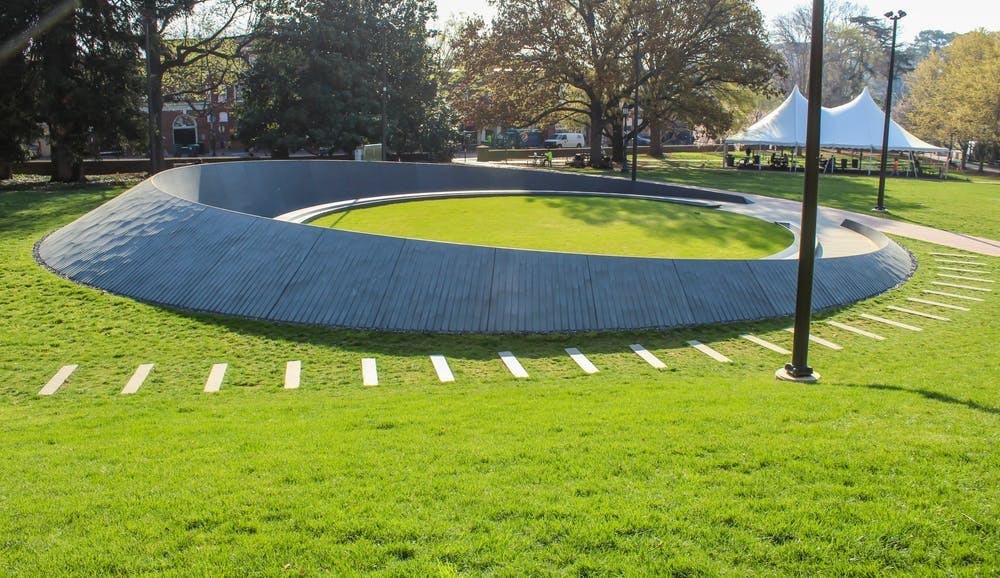Last week, the official University Instagram account posted a series of photos titled “Top Instaworthy Spots on Grounds” which has since been deleted. The series included spots like the Rotunda and Scott Stadium, encouraging students to participate in a photo scavenger hunt for a “chance to win a gift basket filled with U.Va. merch.” One slide stood out from the rest — the third “Instaworthy” site mentioned was the Memorial to Enslaved Laborers. Dedicated last spring, the Memorial is designed to honor the more than 4,000 enslaved laborers who built the University. As many have already noted through social media, to label the Memorial as “Instaworthy” and reduce it to an aesthetic object positioned to garner likes both ignores and disrespects the history and meaning behind the Memorial.
This post is consistent with the University’s historical attitude toward the acknowledgement of enslavement. Until 2007, there was no recognition of enslavement at the University, at which point a small plaque was installed underneath the Rotunda in a place that makes it almost unreadable. The Memorial was spearheaded by student activists and members of the descendants community who work to rectify the University’s long history of disregard toward the history of enslavement. For the University itself to support the creation of this memorial and then exploit it for popularity is simply performative.
The Memorial is a space for reflection, remembrance and acknowledgement of the brutal history of enslavement at the University. To desribe it as an “Instaworthy” space completely undermines its messaging, importance and functionality. The Memorial is designed to encourage interaction with this history, and is also intended to spark reflection. Viewers are encouraged to step inside, observe and listen to the rushing water in a multi-sensory experience. Aside from the blatant disrespect shown by including the Memorial in this post, reducing the Memorial to an object ignores this multidimensional nature. Much of the gravity of the Memorial is felt through physically interacting with it, which is lost when it is labeled as something only to be visually admired. The designation as a solely visual object also discourages open exploration of the space, discouraging anyone unfamiliar with the space from interacting with it beyond taking a photo.
What becomes evident through this post, as well as the lack of response to the vandalism of the home of the Office of African-American Affairs a few weeks ago is that the University does not respect spaces designed to uplift and support Black community members. As Executive Editor Jessica Moore notes, the University “relegat[ed] to the sidelines” a space uplifting Black students by failing to issue a formal statement about the vandalism. The only acknowledgement of the incident came in the form of a community alert that neglected to mention that the vandalized space was the OAAA building. To then post an out-of-touch and inconsiderate photo series commodifying a memorial designed to remember the horrific oppression of enslaved laborers reinforces the University’s lack of respect.
The fact that the post itself was deleted is a credit to the Black students and community members who fought against and brought attention to its disrespectful nature via social media. But with its rightful deletion should have also come a statement from the University acknowledging the harm enacted through its initial posting. The post was deleted with no notice and no apology, with students left to reel from the harm it caused.
The University should not just know better, it should do better. The simple creation of Black-honoring spaces is not enough — the University must also respect Black students, care for Black students and recognize when they have failed. I want to thank the Black students who brought much-needed attention to the injustice of this post — but at the same time, I want to note that the burden should not fall on them. The University should practice what it preaches and protect and respect these spaces.
Hailey Robbins is an Opinion Writer for The Cavalier Daily. She can be reached at opinion@cavalierdaily.com.
The opinions expressed in this column are not necessarily those of The Cavalier Daily. Columns represent the views of the authors alone.







